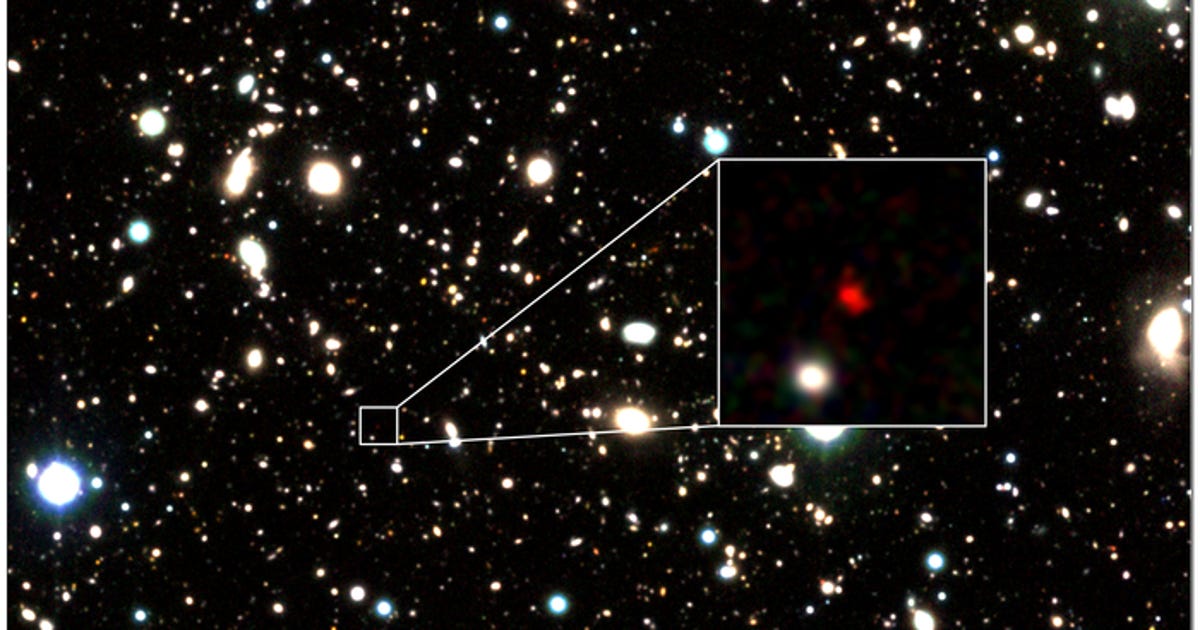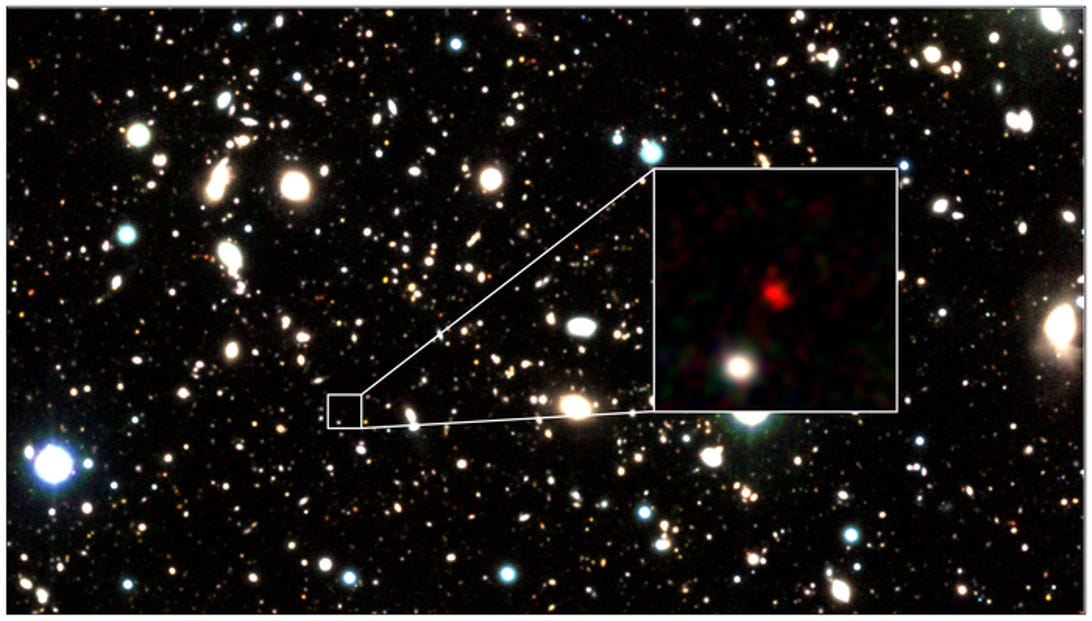

HD1 is pictured right here, zoomed in, as a crimson spot in a crowded cosmos.
Harikane et al.
A galaxy born simply after the cosmic darkish ages could also be the farthest cosmic object ever noticed, however the actual nature of the article stays very a lot a thriller.
Two new research, revealed on April 7, provide the case that an astronomical object — a galaxy — may well be as much as 13.5 billion light-years away. They have dubbed it HD1 and, if showed, it will overtake the present file holder, GN-z11, a galaxy that sits about 13.39 billion light-years away.
HD1 used to be found out with the assistance of a lot of space- and ground-based telescopes, together with NASA’s Spitzer and Japan’s Subaru telescope, located at Hawaii’s Mauna Kea Observatory. Yuichi Harikane, an astronomer on the College of Tokyo and lead creator on one of the vital new research, stated the group searched amongst greater than 700,000 items to seek out HD1. He famous it used to be a stunning in finding that gave him goosebumps.
The galaxy seems tremendous shiny in UV and provides astronomers some clues about what is occurring. The groups provide two theories.
The primary is that HD1 is a superpowered starburst galaxy. It may well be so shiny as a result of it is generating stars at about 10 occasions the velocity than anticipated for a standard starburst galaxy and the ones stars may also be one of the most earliest stars within the universe. They are identified to polish brightly in comparison to different stars.
“If we suppose the celebs produced in HD1 are those first, or Inhabitants III, stars, then its houses may well be defined extra simply,” stated Fabio Pacucci, an astronomer on the Heart for Astrophysics | Harvard & Smithsonian and lead creator on one of the vital research.
However, it may well be a supermassive black hollow feasting on gasoline and dirt — a violent procedure that creates an enormous quantity of sunshine.
What’s a black hollow? The universe’s darkish, mysterious monsters
The paper additionally describes every other very far away galaxy, HD2, however as a result of it isn’t slightly as a long way away it does not get as a lot of the limelight.
Michael Brown, an astronomer at Monash College in Australia now not affiliated with the analysis, famous the group have executed a “completely cheap process at figuring out those galaxies and looking to verify their distances,” however stated, “there are causes for warning.”
Brown famous the process used to calculate the space to the galaxy, referred to as redshift, can every so often via up a couple of answer. On this example, the redshift for HD1 may well be 13, which is what the group suggests, or it may well be 4 — which might imply the article is billions of light-years nearer.
Affirmation of the galaxy’s distance will give you the motivation to discover new bodily processes within the early universe, Harikane famous, as a result of “the lifestyles of HD1 isn’t anticipated with the present theoretical fashions.”
So how are we able to verify, precisely, what HD1 is? Extra information, after all. Brown stated NASA’s James Webb House Telescope, which is gearing as much as get started finding out the universe in the following few months, will have the ability to inspecting HD1 and revealing simply how a long way away it may well be. Some other NASA telescope, the Nancy Grace Roman Telescope, may also lend a hand elucidate the character of HD1 however that isn’t because of release till 2027 on the earliest.
And if you are on the lookout for different far away area items, why now not take a look at Earendel? NASA’s Hubble lately noticed that megastar, the farthest megastar ever seen, at a distance of 12.9 billion light-years away.
Get the CNET Now newsletter
Spice up your small talk with the latest tech news, products and reviews. Delivered on weekdays.
